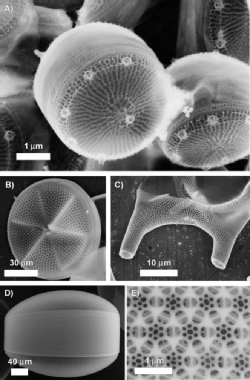My Research
Background
Interactions between biomolecules and inorganic surfaces are prevalent in nature where proteins are integral to the structure, function and formation of biological hard tissues. Examples include hydroxyapatite in bone and tooth enamel, silica nanoparticles present in the cell walls of diatoms, aragonite crystals in mollusk shells and single cubo-octahedral magnetite crystals in magnetosomes of single celled magnetic organisms, Aquaspirillum magnetotacticum.
Study of protein-surface interactions at an atomistic level is key to gaining insight into highly controlled biomineralisation processes and the unique physical properties of biological hard tissues. This knowledge is important in the field of medicine, where it could shed light on possible routes to enhance hard tissue restoration and regeneration, explain the origin of material toxicity (for example the toxicity of silica nanoparticles when inhaled) and aid the biocompatiblity of medical implants by improving cell adhesion. In addition, it is also integral to biomimetics, the study in which nature is used to inspire the discovery of new materials with enhanced properties and energy efficient, green syntheses.

Figure 1 from M. Sumper and E. Brunner, ChemBioChem, 2008, 9, p1187-1194
'SEM images from a few representative diatom genera. A) Thalassiosira pseudonana, B) Actinoptychus spec., C) Eucampia zodiacus, D) and E) Coscinodiscus granii, complete cell wall and high-resolution image of the valve patterning.'
